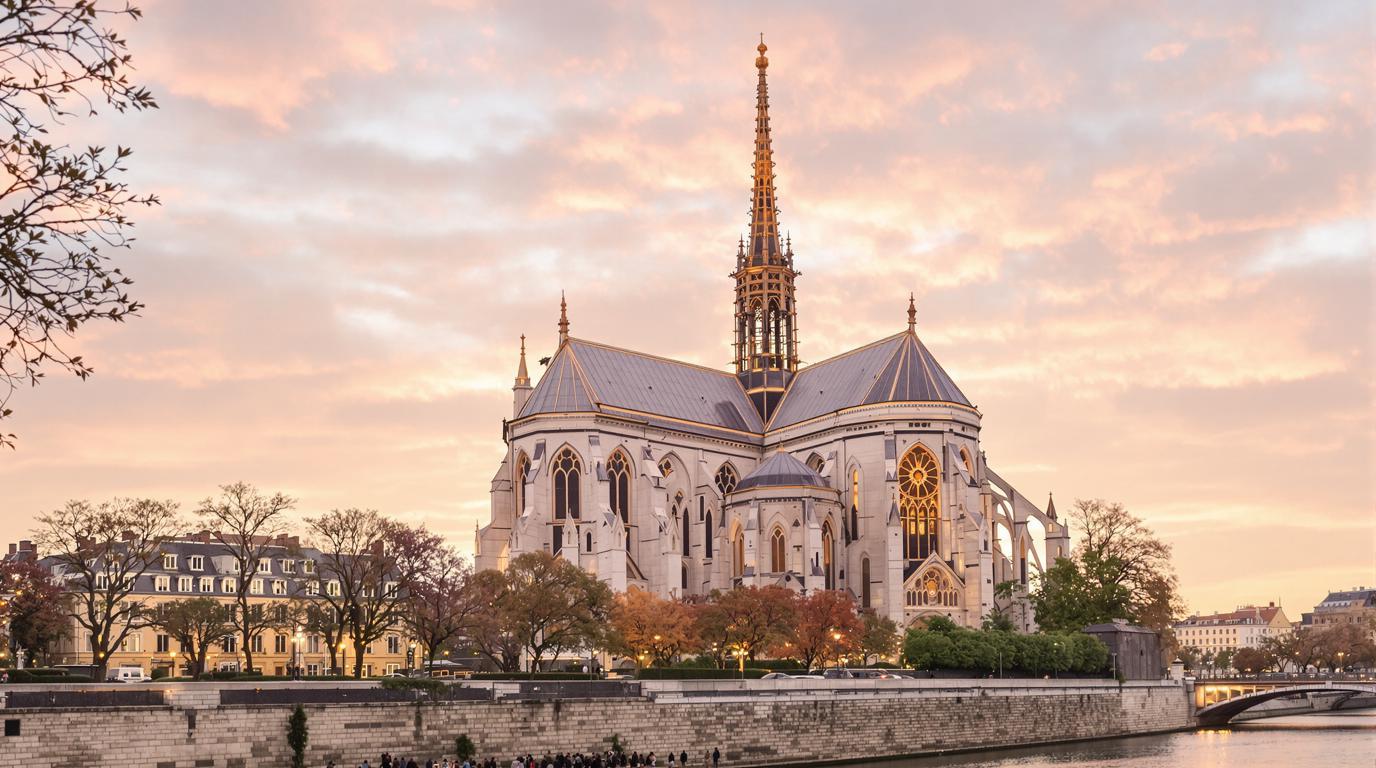The catastrophic fire that engulfed Notre-Dame Cathedral in April 2019 left the world holding its breath. As flames devoured the 850-year-old Parisian icon, many wondered if this architectural masterpiece would ever reclaim its former glory. After five years of painstaking restoration efforts costing nearly €1 billion, Notre-Dame has risen from the ashes – and the result is more breathtaking than anyone could have imagined.
A phoenix reborn: Notre-Dame’s triumphant reopening
When Notre-Dame reopened its doors in December 2024, visitors were greeted with a cathedral that somehow manages to look both pristinely new and authentically medieval. The restored limestone glows with a warmth unseen for centuries, while the reconstructed spire – faithful to Viollet-le-Duc’s 19th-century design – once again punctuates Paris’s skyline.
“What’s most striking isn’t just that they rebuilt it,” notes architectural historian Marie Dubois, “but that the restoration has revealed details that generations of soot and pollution had obscured. We’re seeing Notre-Dame as medieval Parisians once did.”
The crown jewel: Notre-Dame’s spectacular rose windows
Perhaps no feature captures the cathedral’s rebirth better than its three magnificent rose windows. These kaleidoscopic masterpieces survived the blaze but required extensive cleaning. Now, when morning light streams through the stained glass, the interior erupts in a symphony of blues, reds, and golds that dance across the stone columns.
The south rose window, completed around 1260, measures nearly 43 feet in diameter and contains 84 panels arranged in four concentric circles. Visit around 10 AM for the most dramatic light show – and arrive early to avoid the crowds.
Planning your visit to the reborn cathedral
Notre-Dame now welcomes visitors daily from 7:45 AM to 7 PM, with extended hours until 10 PM on Thursdays. While entry remains free, the cathedral has implemented a reservation system to manage crowds. Booking ahead is strongly recommended, especially if you plan to visit the bell towers when they reopen in summer 2025.
“The restoration has given us a chance to rethink the visitor experience,” explains Cathedral Director Philippe Jost. “We want people to connect with Notre-Dame not just as tourists ticking off a landmark, but as participants in a living cultural heritage.”
Hidden gems beyond the facade
While the cathedral itself draws most attention, don’t miss the Treasury, which houses sacred relics including what’s believed to be Christ’s Crown of Thorns. For a deeper historical dive, explore the archaeological crypt beneath the parvis, revealing Paris’s ancient foundations from Roman times through the Middle Ages.
After visiting Notre-Dame, cross the Seine to experience another medieval marvel – a mysterious 12th-century sculptor whose anonymous works span three countries. The artistic connections between these medieval masterpieces are fascinating.
Beyond Paris: Europe’s hidden architectural treasures
Notre-Dame’s resurrection has sparked renewed interest in Europe’s architectural heritage. While in France, consider visiting the castle abandoned for 200 years until an emperor transformed it into the perfect medieval fantasy.
For those seeking natural wonders to complement architectural splendors, Iceland’s hidden waterfall perspective offers an equally awe-inspiring experience.
A resurrected cultural heartbeat
Notre-Dame isn’t just an architectural triumph – it’s once again becoming Paris’s cultural and spiritual pulse. The 2025 concert series features 50 performances, with Tuesday evening concerts at 8:30 PM particularly magical as music reverberates through the vaulted ceilings.
“Standing inside Notre-Dame during a choir performance, watching light filter through those rose windows – it’s like witnessing eight centuries of history breathing all at once,” shares Parisian musician Claude Renault.
Whether you’re drawn by faith, architecture, history, or simply the human triumph of restoration, Notre-Dame in 2025 offers something profound. It stands not just as a monument restored, but as living proof that what humanity creates with passion, it can also resurrect with devotion.
